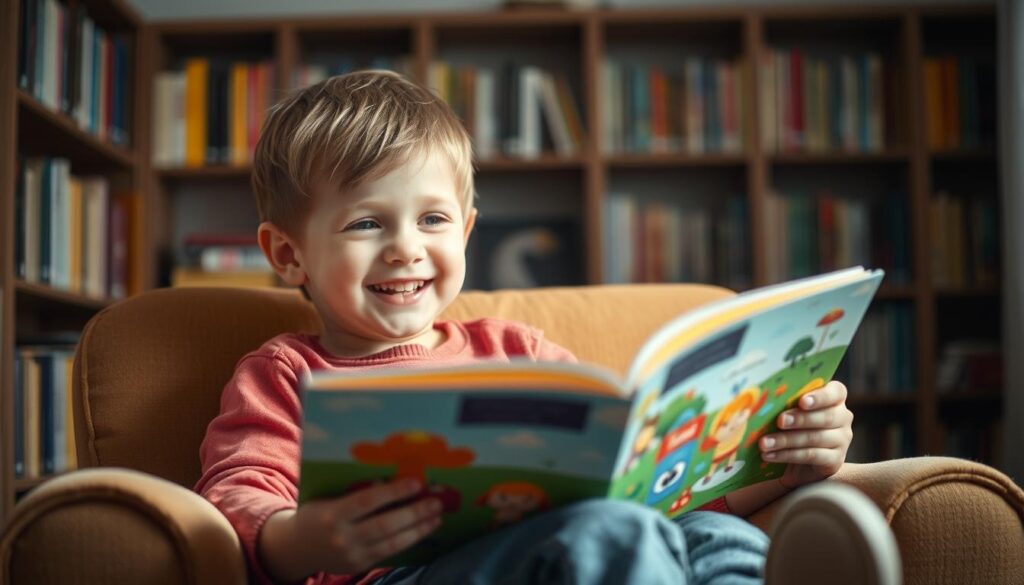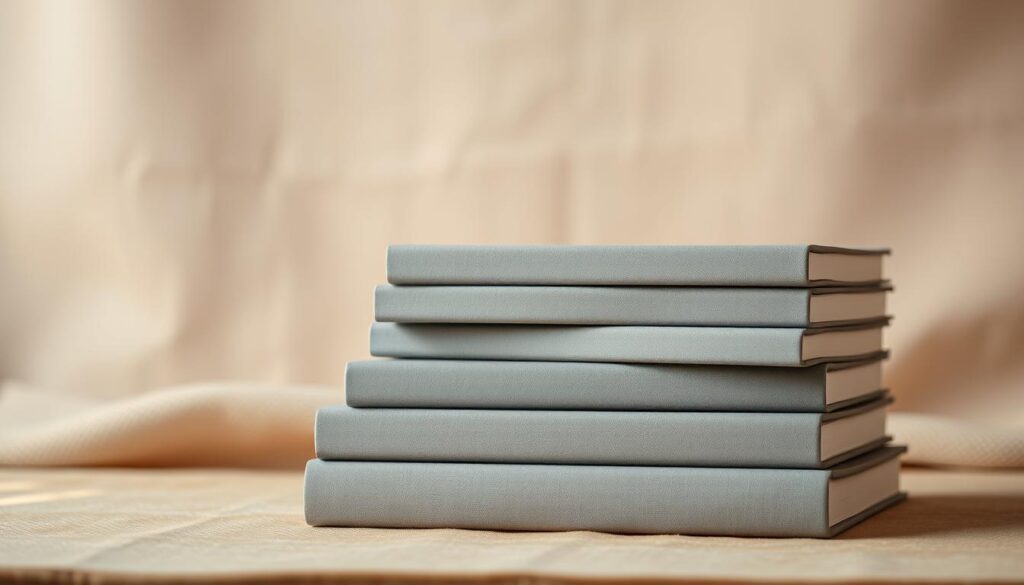Best Books for Beginners: Top Picks for New Readers
Starting your literary journey shouldn’t feel like solving a puzzle. Yet many people struggle to find stories that stick – ones that pull you in without making you reach for a dictionary every other page. The secret? Choosing titles designed to spark joy rather than frustration.
Modern life moves fast, but the right story can slow time. We’ve handpicked titles across genres that balance approachable language with unforgettable plots. Think cozy mysteries you finish in a weekend or contemporary novels that read like chats with a close friend.
What makes these picks stand out? They prioritize clarity over complexity while still delivering rich themes. Many feature shorter chapters perfect for busy schedules, helping you build reading stamina naturally. Literacy coaches agree: starting with manageable choices leads to lasting habits.
Key Takeaways
- Accessible language matters more than literary prestige for new readers
- Variety across genres increases engagement and discovery
- Shorter chapter structures support consistent reading habits
- Expert-recommended titles reduce decision fatigue
- Modern stories often resonate better than classic texts initially
Introduction to the World of Beginner Reading

Books are silent mentors that guide new readers through stories without overwhelming them. Frederick Douglass captured this perfectly: “Once you learn to read, you will be forever free” – a truth that applies to every person discovering the power of words. Literacy isn’t just skill-building; it’s about gaining keys to unlock new ways of thinking.
The reading world might seem vast at first glance. But modern authors create entry points designed for curiosity, not confusion. Short chapters, relatable characters, and clear language help turn pages faster than you’d expect.
| Feature | Beginner Books | Advanced Books |
|---|---|---|
| Language Complexity | Everyday vocabulary | Nuanced phrasing |
| Chapter Length | 3-5 pages | 10+ pages |
| Themes | Straightforward lessons | Layered symbolism |
Your journey starts with stories that meet you where you are. Whether it’s a graphic novel’s visual cues or a mystery novel’s cliffhangers, the right book creates momentum. And remember – every lifelong reader began with that very first page.
Benefits of Reading for New Readers
Opening a book does more than tell a story—it rewires your brain. A 2025 study found just 15 minutes of daily reading boosts literacy skills by 37% in new readers. That’s less time than scrolling through social media feeds, yet the rewards last a lifetime.
Regular reading sharpens focus like mental weightlifting. Tracking plot twists and character arcs builds concentration muscles that help at work and home. You’ll catch details faster and solve problems with fresh clarity.
Books become secret vocabulary coaches. New words stick through context, not flashcards. This language growth helps express ideas clearly—whether emailing colleagues or sharing stories with loved ones.
Stories also stretch empathy. Following diverse characters’ lives fosters understanding across cultures and generations. One librarian notes: “Readers live a thousand lives—and gain a thousand perspectives.”
- Reduces stress by lowering heart rate 68% faster than music
- Improves sleep quality when replacing screen time before bed
- Creates daily moments of calm in hectic schedules
This habit feeds curiosity while nurturing mental health. Whether you love mysteries or memoirs, every page turns you into a sharper, kinder version of yourself.
What Makes a Book Ideal for Beginners?

Great stories for new readers act like training wheels – supportive but never restrictive. They balance clear communication with creative flair, letting you focus on the ride rather than the mechanics.
Rhythm Beats Complexity
Masterful authors use musical language patterns to make words stick. Bill Martin Jr.’s Chicka Chicka Boom Boom turns alphabet learning into a catchy chant. Dr. Seuss crafts entire worlds through rhyming couplets that dance off the tongue.
This approach works because repetition builds recognition. Stories like Laura Numeroff’s circular tales (“If you give a mouse…”) create predictable patterns. Anna Dewdney’s Llama Llama series uses emotional echoes kids recognize instantly.
Pacing That Pulls You Forward
Beginner-friendly books move like reliable trains – steady stops, clear destinations. Short chapters act as natural breathing spaces. Paragraph breaks come before attention wanders.
Accessible language means using familiar words as stepping stones. New vocabulary appears like friendly neighbors, introduced through context clues. A librarian once told me: “The best teachers explain through showing, not telling.”
Relatable characters seal the deal. When situations mirror real-life experiences – bedtime struggles, friendship hiccups – pages turn themselves. Emotional investment grows naturally, chapter by chapter.
Understanding Literacy and the Science of Reading
Reading isn’t magic, but neuroscience reveals how letters become meaning. The science of reading combines decades of research showing how our brains process written language. It’s like having X-ray vision for understanding why some methods work better than others.
Essential Components: Phonics, Fluency, and Comprehension
Think of literacy skills as building blocks. Phonics connects letters to sounds – the foundation. Fluency turns those sounds into smooth sentences. Comprehension adds meaning, like windows letting light into a house.
| Component | Purpose | Real-World Example |
|---|---|---|
| Phonics | Letter-sound relationships | Sound out “c-a-t” |
| Fluency | Reading speed/accuracy | Read aloud without stumbling |
| Comprehension | Understanding context | Explain story events |
Building a Foundation Through Decodable Texts
Decodable books act like training wheels. They use predictable patterns (cat, mat, sat) to build confidence. A child masters one sound before tackling blends like “sh” or “th”.
Educator Dr. Louisa Moats notes: “Teaching reading is rocket science.” This approach explains why structured programs work – they align with how brains process language. Whether you’re six or sixty, these tools help crack the reading code.
How to Choose the Best Books for Beginners

Navigating the world of literature becomes easier with the right tools and insights. Start by exploring trusted resources that highlight titles matching your interests and reading level. Award lists and community reviews act like compasses, pointing you toward stories that resonate.
Mining Gold From Reviews and Recommendations
Platforms like GoodReads.com offer a treasure trove of real opinions from fellow book lovers. Look for patterns in reviews mentioning quick pacing or relatable characters. One librarian advises: “Focus on comments from people who felt challenged but not overwhelmed.”
Prestigious awards simplify discovery. Caldecott Medal winners excel in visual storytelling, while Newbery Honors spotlight chapter books with heart. Coretta Scott King Award selections often feature powerful cultural narratives. These curated lists reduce guesswork.
Build a varied reading list mixing genres and formats. Try a graphic novel one week, a short memoir the next. Notice what keeps you reaching for the book instead of your phone. If a story feels like homework after 30 pages? Swap it out – your time matters.
Classic Favorites: Timeless Novels for New Readers
Timeless stories act as bridges between generations, offering fresh readers gateways to enduring wisdom. These classics prove great storytelling needs no expiration date – their emotional truths remain vibrant centuries after publication.
Stories That Grow With You
L.M. Montgomery’s Anne of Green Gables shines with a 4.32 Goodreads rating. Over a million readers adore the red-haired orphan’s journey – her fiery spirit makes complex themes feel personal. Jane Austen’s Pride and Prejudice charms 4.6 million fans with Elizabeth Bennet’s sharp wit, showing how characters drive plots.
| Title | Author | Rating | Beginner-Friendly Feature |
|---|---|---|---|
| Little Women | Louisa May Alcott | 4.17 | Relatable sibling dynamics |
| The Secret Garden | Frances Hodgson Burnett | 4.16 | Magical transformation themes |
| Black Beauty | Anna Sewell | 4.00 | Short, impactful chapters |
These classics succeed through balance. Their authors weave rich themes into accessible language – healing in The Secret Garden, justice in Black Beauty. Modern readers connect because the characters face universal struggles: finding belonging, challenging norms.
While Pride and Prejudice explores 19th-century society, its romantic tension feels current. A librarian notes: “Great stories teach through delight, not lectures.” That’s why these novels remain perfect starting points – they educate hearts while entertaining minds.
Modern and Engaging Reads for Today’s Beginner

Contemporary fiction acts as a cultural mirror, reflecting our world through stories that feel both fresh and familiar. Modern authors excel at crafting narratives that balance relevance with readability – think binge-worthy plots wrapped in conversational language.
J.K. Rowling’s Harry Potter series remains a gateway drug for new readers. The first book’s 309 pages fly by as you follow Harry’s journey from cupboard under the stairs to Hogwarts hero. Its secret? Chapters that end with just enough magic to make you say “one more page”.
John Green proves serious topics belong in starter books. The Fault in Our Stars tackles illness with humor and heart, using teenage voices that sound authentic rather than textbook-perfect. Readers rate it 4.14 stars for its emotional honesty.
Beach read? More like bench press for your imagination. Emily Henry’s rom-coms like People We Meet on Vacation deliver romantic tension through witty banter and relatable misadventures. The 364-page story flows like your favorite playlist – easy to enjoy, hard to pause.
For historical flair, Taylor Jenkins Reid’s Evelyn Hugo novel blends Old Hollywood glamour with modern relationship dynamics. Its 4.44 rating comes from readers who devoured the layered storytelling in under 400 pages. As one fan tweeted: “Felt like chatting with my most fascinating friend.”
These fiction picks prove modern stories can be both accessible and unforgettable. They meet today’s readers where they are – busy, curious, and craving connection through every turned page.
Exploring Picture Books and Graphic Novels
Visual narratives transform reading into an interactive adventure where images and words dance together. These formats act as confidence boosters, letting readers decode meaning through both art and text. For those who find walls of text intimidating, vibrant panels become stepping stones to literary discovery.
Visual Storytelling and Rhythmic Text
Mo Willems’ Elephant & Piggie series masters this balance. Speech bubbles burst with personality, while minimalist illustrations amplify humor. Greg Pizzoli’s Baloney & Friends uses color-coded dialogue to help track characters, turning each page into a playful learning tool.
Titles That Spark Imagination
Ben Clanton’s Narwhal: Unicorn of the Sea merges marine facts with absurdist tales. Dav Pilkey’s Dog Man comics deliver fast-paced adventure through dynamic layouts. These books prove that visual storytelling isn’t simplified – it’s amplified storytelling.
Lincoln Peirce’s Big Nate and Jeff Kinney’s diary-style novels use doodles to mirror real-life scrapbooks. This approach creates instant relatability, showing how storytelling thrives when words and pictures collaborate.
FAQ
How do I know if a book is suitable for a new reader?
Are classic novels too challenging for beginners?
Why are phonics and fluency important for early readers?
Can graphic novels help improve literacy skills?
How do modern books compare to classics for beginners?
What role do picture books play in developing a love for reading?
Should I prioritize book reviews when selecting titles?

Sharon Molly is a content creator in lifestyle, fashion, and travel, delivering style-savvy advice and destination insights to inspire confident living. With a background in digital media, she combines aesthetics with practical guidance for modern women on the go.




